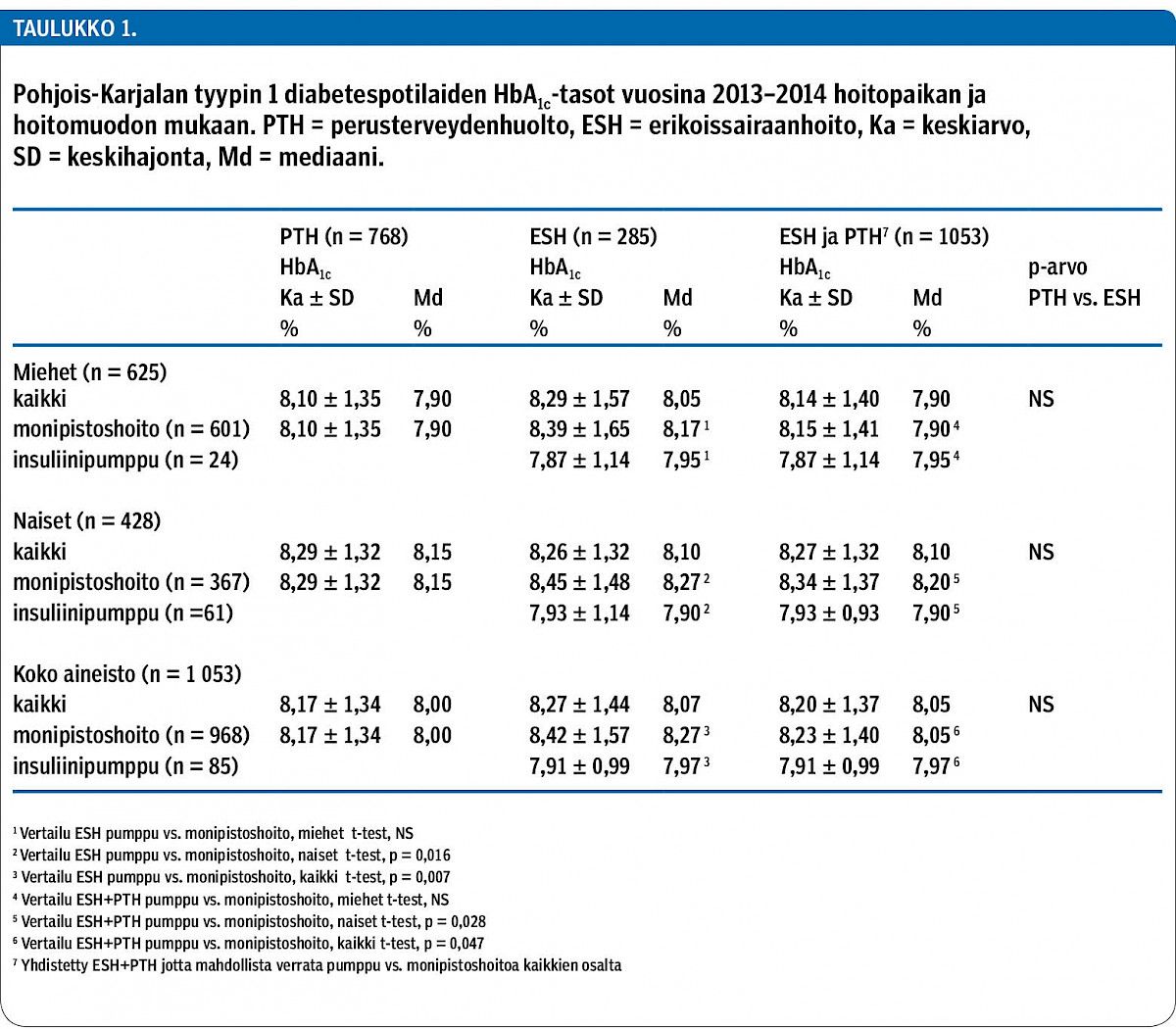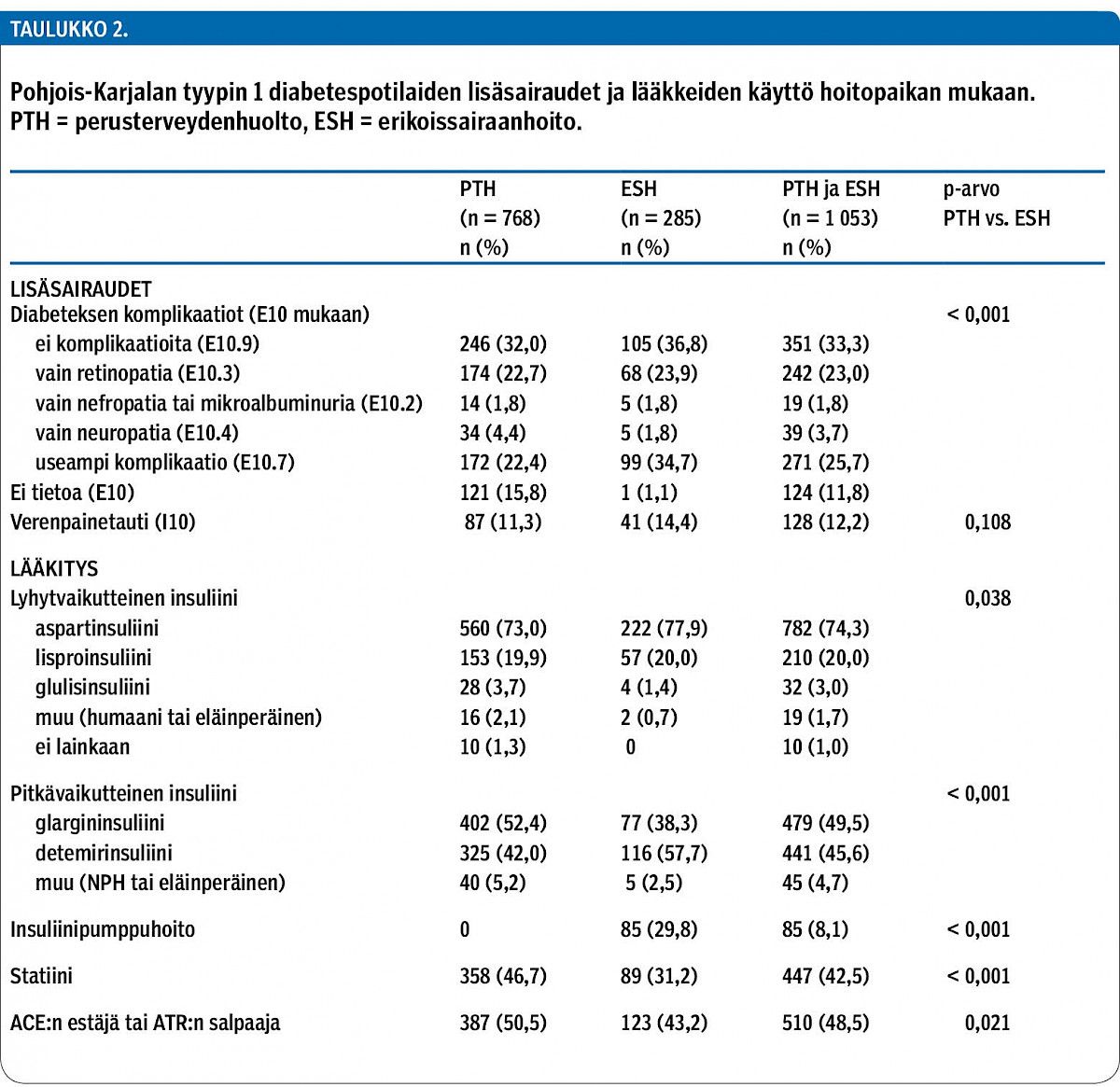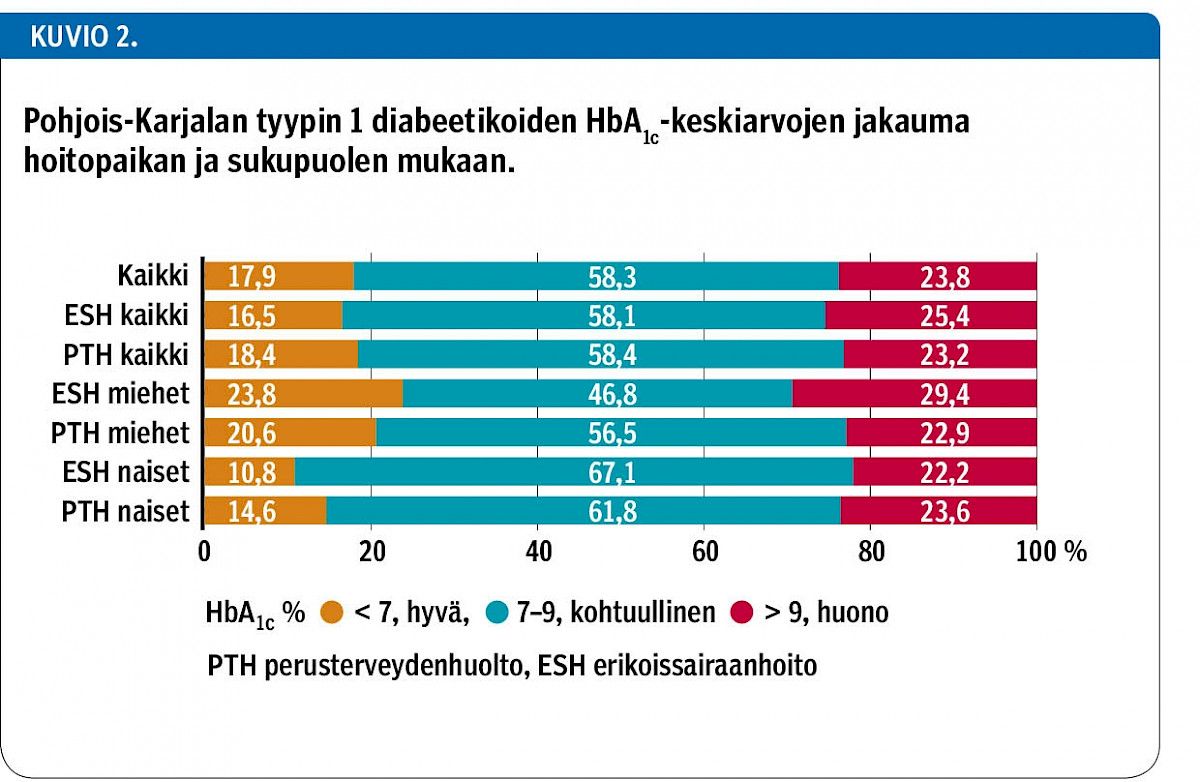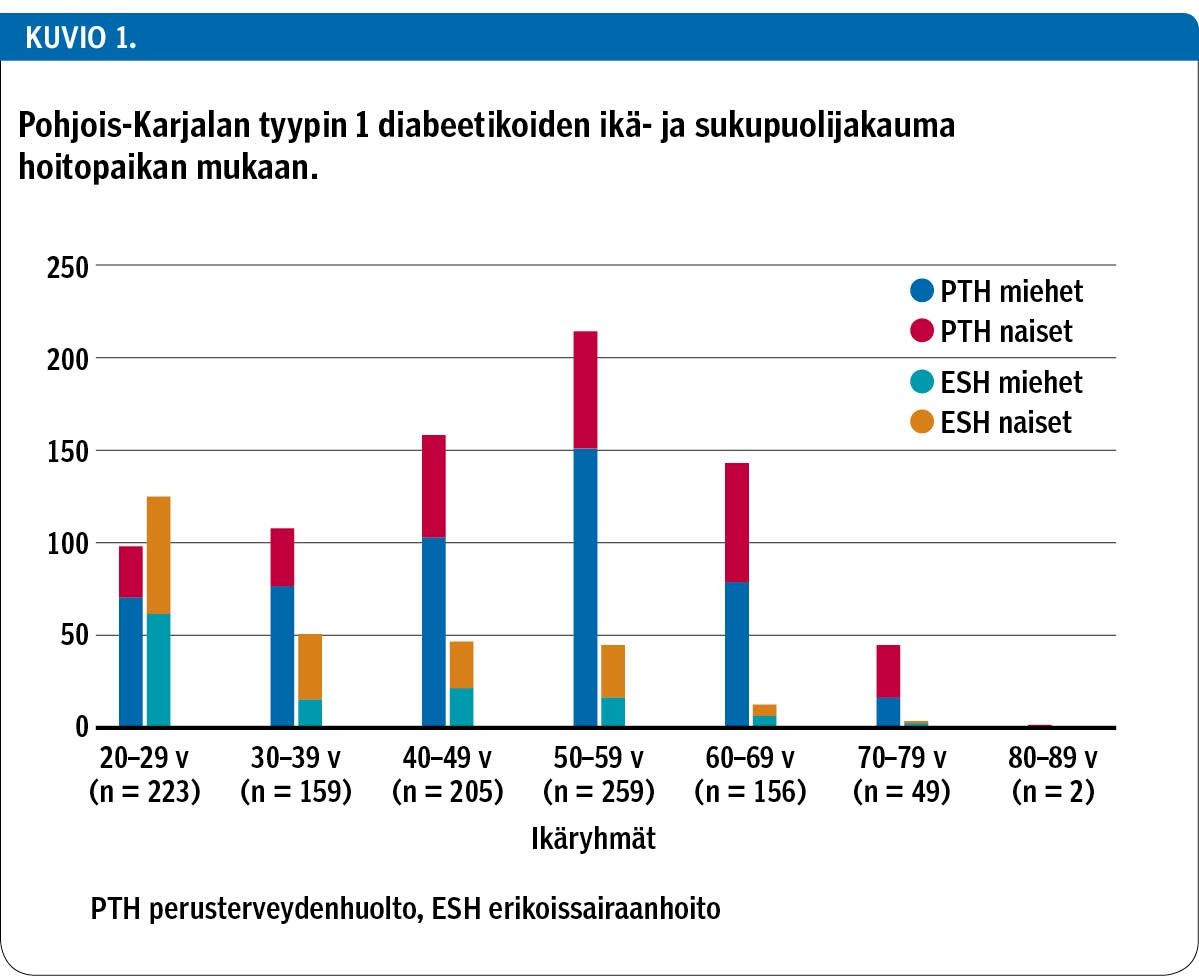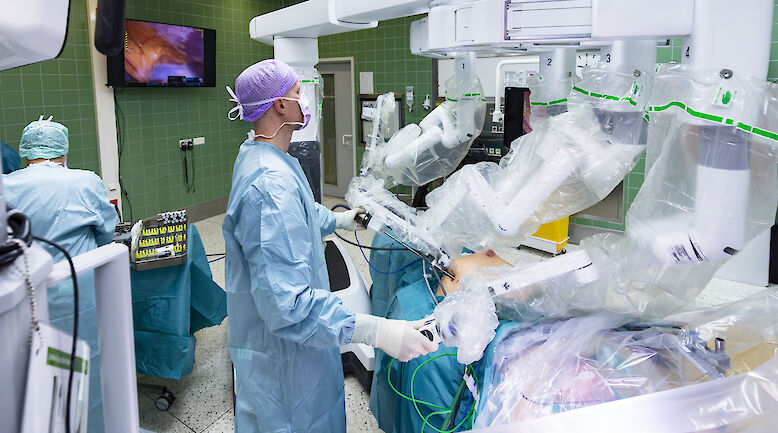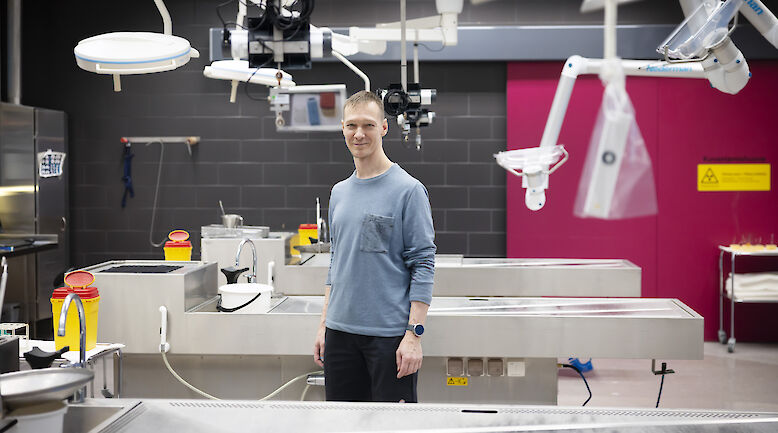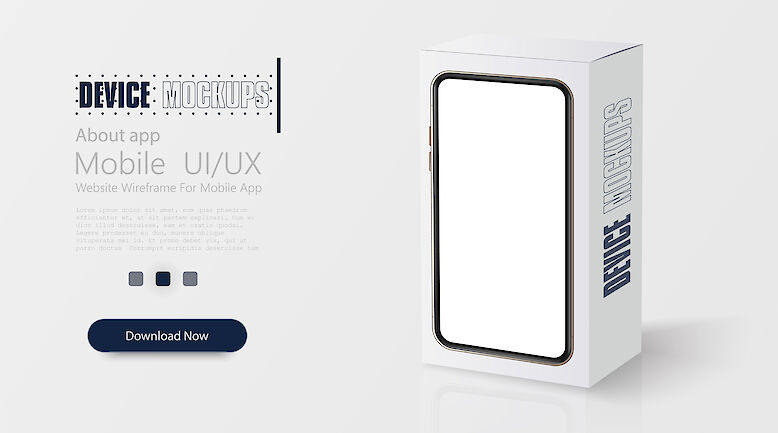Type 1 diabetes care in North Karelia

Background
Quality improvement has been mainly focused on type 2 diabetes in Finland. Type 1 diabetes is also a serious disease needing similar attention. The aim of this study was to determine the quality of care of patients with type 1 diabetes in North Karelia, Finland, and to compare the data in primary health care centres and secondary care units.
Quality improvement has been mainly focused on type 2 diabetes in Finland. Type 1 diabetes is also a serious disease needing similar attention. The aim of this study was to determine the quality of care of patients with type 1 diabetes in North Karelia, Finland, and to compare the data in primary health care centres and secondary care units.
MethodsAll adult type 1 diabetes patients (n = 1053) over 20 years of age were identified from the regional electronic patient database. The patients’ individual data for permanent diagnosis, medication and HbA1c measurements during the years 2013 and 2014 were obtained from medical records.
ResultsThe primary health centres took care of 73% of type 1 diabetes patients and the diabetes clinic in the secondary care hospital took care of 27% of type 1 diabetes patients. The diabetics in the secondary care clinic were younger, 44% were < 30 years old, whereas the diabetics in primary health centres were mostly (68%) 40 – 60 years old. The overall mean HbA1c level during 2013 – 2014 was 8.20% (66.0 mmol/mol) and the median was 8.05% (64.5 mmol/mol). Eighteen percent of the patients reached the HbA1c target of < 7.0% (53 mmol/mol). Mean HbA1c levels did not differ between the primary and secondary care patients (8.17 ± 1.34% and 8.27 ± 1.44%, NS). HbA1c levels were significantly lower in the diabetics treated with continuous subcutaneous insulin infusion than in the diabetics treated with multiple daily injections of insulin (7.91 ± 0.99% and 8.23 ± 1.40%, p = 0.047).
ConclusionsIn North Karelia, the glycaemic control of type 1 diabetes patients was better than in previous Finnish reports. The overall median HbA1c during 2013 – 2014 was 8.05%. However, only eighteen percent of type 1 diabetics reached the good glycaemic control target of HbA1c <7.0%. There were no significant differences in glycaemic control between the diabetics treated in primary or secondary care. Insulin preparations and medications were also up-to-date in primary care.
